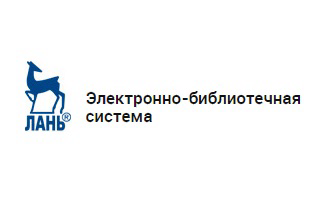УДК 330.15
DOI: 10.21440/0536-1028-2019-4-98-105
Ivanov A. N., Ignatieva M. N. Economic appraisal of consequences at subsoil resources exploitation. Izvestiya vysshikh uchebnykh zavedenii. Gornyi zhurnal = News of the Higher Institutions. Mining Journal. 2019; 4: 98–105 (In Russ.). DOI: 10.21440/0536-1028-2019-4-98-105
Relevance. Closer attention to economic measures of state regulation of nature resources management in modern conditions requires clearing up evolution in the tools of economic appraisal of anthropogenic impacts conditioned by subsoil resources exploitation. Research aims to determine the sequence of stages in economic substantiation of environmental impact assessment (EIA), stating the reasons slowing down the process of economic appraisal of consequences which reduces the reliability of economic effectiveness determination for measures mitigating and preventing negative impacts.
Research methodology is based on generalization and analysis of methodological approaches to economic appraisal of environmental impact consequences under subsoil resources exploitation.
Research results. Results generalization and analysis of research of consequences economic appraisal allowed to distinguish some sequent stages of this process interconnected with institutional transformations in EIA. At the first stage there are fragmentary determinations of economic damage caused by natural resources loss and lands removal from agricultural use. At the second stage, methodological supply is developed for consequences economic appraisal conditioned by contamination and removal (depletion) of natural resources. An exception is the consequences associated with surface and lithosphere massif shape variation. The requirement to consequences economic appraisal fulfillment under EIA appears in official documents only after EIA procedure regimentation, and is initially of rather uncertain character: it is present in some documents and absent in others. As a result, the development of unified requirements to execution of economic appraisal can be referred only to the moment of passing СП 11-101-95 (code practice) in 1995. Yet, summary table of ecological-economic appraisal of industrial facilities construction (reconstruction) in part “Ecological-economic effectiveness of investment in construction” includes only the list of estimated cost of environmental facilities and measures. In May 2000, new Statement on environmental assessment of future business or other activities in the Russian Federation was approved with the purpose of establishing uniform rules of EIA organization and fulfillment, and the requirement of consequences economic appraisal is out of the picture both in this Statement and in EIA guidelines. Today ISSN 0536-1028 «Известия вузов. Горный журнал», № 4, 2019 105 the given Statement is an official document regulating EIA, in which only in part 3.2.2.“Examination of future business and other activities according to EIA” there is a directive on effectiveness assessment of future activity on mitigation and prevention of negative impact. At the third stage, beginning with 1995, methodological recommendations have been progressively detailed, a range of subject methodologies appears, as well as the methodological approaches taking into account regional specifics.
Summary. It follows from the analysis that economic appraisal of consequences is not carried out at the pre-project stage, though methodological supply for it has been prepared. Desertion or insufficient fulfillment of EIA economic substantiations is conditioned by the lack of uniform regimentation of this process and the lack of the corresponding methodological tools federally approved.
Key words: economic appraisal; consequences; methodological supply; regimentation; economic effect; economic damage; ecological-economic effectiveness.
REFERENCES
- Bellezoni R. A., Sharma D., Villela A. A., Pereira Junior A. O. Water-energy-food nexus of sugarcane ethanol production in the state of Goiás, Brazil: An analysis with regional input-output matrix. Biomass and Bioenergy. 2018; 115; August: 108–119.
- Buevskii N. M., Zorin L. F. Revegetation of lands disturbed by mining. Donetsk: Donbass Publishing; 1969. (In Russ.)
- Korkin K. I., Ovchinnikov V. A. Economic effectiveness of territories reclamation disturbed by opencast mining. Gornyi zhurnal = Mining Journal. 1965; 10: 33–35. (In Russ.)
- Gorlov V. D. Assessment of damage connected with the disturbance of earth’s surface under opencast mining. Izvestiya vysshikh uchebnykh zavedenii. Gornyi zhurnal = News of the Higher Institutions. Mining Journal. 1972; 3: 14–19. (In Russ.)
- Kirillova T. B., Ovchinnikov V. A. Economic efficiency of recultivation of the broken lands. In: Recultivation of lands broken during mineral production. Tatru: Estonian Environmental Research Institute; 1975. p. 123–129. (In Russ.)
- Lashgari N., Ghorbani J., Zali S. H., Vahabzadeh G. Assessment of the vegetation restoration potential on coal mine wastes (case study: Karmozd Savadkoh mines, Mazandaran Province). Journal of Environmental Studies. 2016; 41 (4): 757–770.
- Vitt M. B. Economic appraisal of lands dedicated for construction. Moscow: Stroiizdat Publishing; 1984. (In Russ.)
- Liu S. H., Liu B., Li Y. Risk factors associated with multiple correlated health outcomes in the 500 Cities Project. Preventive Medicine. 2018; 112; July: 126–129.
- Casey J. A., Gemmill A., Karasek D., Ogburn E. L., Goin D. E., Morello-Frosch R. Increase in fertility following coal and oil power plant retirements in California. Environmental Health: A Global Access Science Source. 2018; 17; 1. 2 May; entry number 44: 2–10
- Tountas Y., Georgoulis L. Natural environment and health. Archives of Hellenic Medicine. 1998; 15; 5: 482–493.
- Karaev V. B., Baranova V. V. On the economic damage caused by water resources contamination. Vodnye resursy = Water Resources. 1973; 3: 143–155. (In Russ.)
- Gofman K. G., Gusev A. A. (eds.). Environmental protection: clean environment control models. Moscow: Economica Publishing; 1977. (In Russ.)
- Sakhaev V. G., Shcherbinskii B. V. Environmental protection reference. Kiev: Budivelnik Publishing; 1986. (In Russ.)
- Lazareva I. В. Reclamation of disturbed lands for for urban constructions. Moscow: Izd-vo literatury po stroitelstvu Publishing; 1972. (In Russ.)
- Sorokin N. D. Industrial environmental protection. St. Petersburg: Integral Publishing; 2007. (In Russ.) Received 28 March, 2019









